The heavy duty cutters for industrial purposes and sophisticated guillotine cutters are just a few of the varieties that fall under paper cutters. It is easy for one to get lost in the multitude of choices available to choose from. Through this article, I have provided the necessary information to ensure you make the right choice. I will explain each type along with its significance, functions, and applications. You will become familiar with the perfect paper cutter for you whether you are a creative type, an office practitioner, or someone performing high volume cutting tasks.
What is a Cutter and What Does It Do?
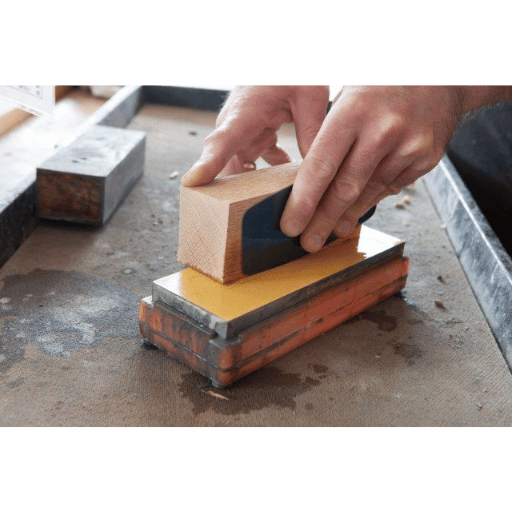
A cutter is a tool used to slice documents. It provides easier and more precise cutting for sheets of paper with the assistance of a sharp blade fixed to a lever or sliding mechanism. The blade cuts through the paper with minimal effort, and the pages are placed on the base and aligned he paper is aligned on the base using lines or grids. Paper cutters can be found in offices, schools, and the creative industry, as they help complete a task or document accurately, efficiently, and with a neat finish.
Understanding Different Types of Cutters
Guillotine Cutters
Auxiliary cutters housed in guillotines have a long, straight blade fixed to a lever which provides them the ability to cut multiple sheets. This feature makes one of the most heavily relied upon cutting devices in offices and school where documents required multiple sheets to be cut through. They are famous for their speed and accuracy alongside other features like being able to slice through 30 sheets of 20-pound papers with a single cut.
Rotary Trimmers
A rotary trimmer is a type of paper cutting tool that has a round blade that spins in sync with a sliding carriage that operates on a rail. These devices excel at making very precise cuts which means they can be used for cutting photos or complex designs. Rotary trimmers are popular with photograph printers and hobbyists. While these types of trimmers are less powerful than other types and can only handle around 10 sheets of 20 lb. paper at a time, their accuracy more than makes up for this limitation.
Stack Cutters
These are more advanced and robust tools that can cut through stacks of paper from several dozen up to several hundred sheets at one time. Stack cutters have powerful clamps that hold the stack in a fixed position while cutting so that uniform cuts can be made across all of the pages. They are commonly used for bulk processing or in print shops and other professional environments.
Laser Guided Cutters
As their name suggests, laser guided cutters employ the use of a laser beam to indicate the cutting margin, thus enhancing accuracy and averting mistakes. This type of cutter is common in businesses where precision is a prerequisite, for instance, in graphics and advertising. Notable models maintain a medium stack capacity of 20-50 sheets of 20 lb. paper.
The Mechanics Behind a Cutting Tool
- Blade Material: Sharp and long-lasting blades are usually made from high-quality steel or titanium alloys. For example, industrial-grade cutters may use hardened steel to resist wear from heavy use.
- Cutting Capacity: Entry-level models are limited to up to 10 sheets of 20 lb paper, while more advanced heavy-duty models can manage stacks over 500 sheets.
- Accuracy Tolerances: Many professional cutters offer accuracy within ±0.1 mm which is crucial for dimensions in projects such as brochures and labels.
- Safety Features: Accident prevention measures such as automatic blade retraction and dual-hand operation ensures accused free use modern cutting tools.
Applications of Cutter Tools in Various Industries
According to the latest Google search information, cutter tools are employed across various industries for precision-cutting, enhancing productivity, and achieving tailored results.
|
Industry |
Key Use |
Material |
Type |
Benefit |
|---|---|---|---|---|
|
Office |
Document cut |
Paper |
Guillotine |
Accuracy |
|
Printing |
Print trim |
Paper/Card |
Rotary Blade |
Precision |
|
Manufacturing |
Material cut |
Metal/Plastic |
Laser Cutter |
Efficiency |
|
Textile |
Fabric trim |
Textile |
Fabric Shear |
Clean Edge |
|
Art & Design |
Pattern cut |
Various |
Craft Knife |
Flexibility |
How to Choose the Right Cutter for Your Needs?
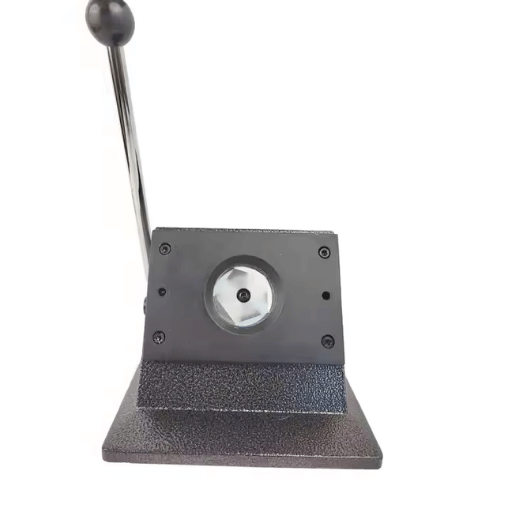
Factors To Think About: Thickness and Cutting Power
Material Type
Cutter differentiation exists concerning substrates like paper, fabric, or metals. For instance, dense materials such as metals are expertly handled by laser cutters, while fabric shears specialize in textiles.
Cutting Thickness
Establish the maximum thickness the cutter is able to process material wise. For example, guillotine cutters are able to handle up to 15 sheets of paper, whereas craft knives best work with thinner precision materials.
Precision Requirements
Laser cutters and rotary blades work exceptionally well and with very high accuracy on detailed works, making them ideal for professional outputs due to their clean and consistent results.
Frequency Of Use
While infrequently used, casual crafting projects might only require a simple craft knife or rotary blade, whereas regular, heavy-duty work requires tools such as industrial-grade laser cutters.
Comparing Cutter Heavy Duty vs. Guillotine Paper Cutter
Cutter Heavy Duty: This device is ideal for large volume Brazilian document shredding shredding up to 400 sheets of 20lb paper in one single cut.
Guillotine Paper Cutter: Better suited for moderate workloads, as these types of devices usually support 20-50 sheets, varying by model.
Cutter Heavy Duty: Features complex alignment grids alongside ultra sharp blades granting precise cuts for even thick stacks of materials.Guillotine Paper Cutter: Provides reasonable accuracy, although manual adjustment may introduce some discrepancies with larger bulk materials.
Cutter Heavy Duty: Uses construction grade materials of put through rigorous use, built for long-term heavy activity cycles.
Guillotine Paper Cutter: Offers reasonable safety features, but high use may lead to problems with reliability over time.
Cutter Heavy Duty: Employs blade guards and safety locks to avert incidents, making the other side of the tool equally as safe.
Guillotine Paper Cutter: rough and tumble the device is, it so to say, very well put together. Uses like the ones mentioned earlier may not have problem when it comes to losing functionality with time.
Assesing the matters of concern for precise cuts
- Cutter Heavy Duty: Again, materials of industrial grade level focused on consumptions will tend to outlast their competitors, giving more rigorous life cycles.
- Guillotine Paper Cutter: High longevity use rate of the item also suggest it was thoughtfully fashioned together or showing some personality whenever used.
- Cutter Heavy Duty: Items meant for bulking and freighting purchase bear some risks for the users. These mentioned risks can be remedied with the use of logically designed attacks, hence label of the paper holder.
- Guillotine Paper Cutter: Although the loss of life is not to be hoped for, it is to note injury. The aforementioned lack of protection is clearly a concern, but attention can be directly directed to spacing.
Why Invest in High-Quality Cutting Machines?
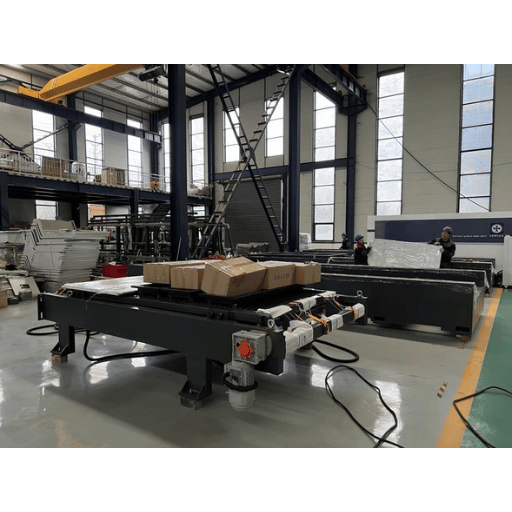
Benefits of Using a Sharp Blade for Clean Cut
A sharp blade ensures precision, reduces material damage, and enhances cutting efficiency across various applications.
|
Key Point |
Description |
|---|---|
|
Precision |
Accurate, clean edges |
|
Efficiency |
Faster operation speed |
|
Durability |
Longer tool lifespan |
|
Safety |
Reduces accidents |
|
Material |
Preserves integrity |
|
Cost |
Lower maintenance costs |
|
Versatility |
Suitable for various uses |
|
Finish |
Professional-quality cut |
The Importance of Hardened Steel to Cutting Blades
Hardened steel is integral to the effectiveness and functionality of cutting blades. Below is a detailed list of its contributions:
- Enhanced Strength: With hardened steel, blades can easily cut through tougher materials due to its exceptional strength.
- Wear Resistance: During periods of heavy usage, the processes done to sharpen it improves wearing capability, greatly increasing its durability.
- Edge Retention: Less frequent downtimes for sharpening will be encountered as blades kept using harden steel retain their sharp edge for longer periods of time.
- Heat Resistance: During cutting operations where high temperatures are inevitable, hardened steel during its cutting will not deform or lose its cutting ability.
- Corrosion Resistance: Blades treated with hardened steel will be able to retain their functionality with the added durability of heightened resistance to corrosion due to processes done to them.
- Impact Tolerance: It reduces the likelihood of fracturing and chipping to occur with impact stress due to the absorption and enduring capabilities of hardened steel.
- Recovery: All sections of the blade will be universally impactful with its performance due to the hardness being uniform, allowing effective performance throughout.
- Precision Cutting: Working professionally requires the operations to be done accurately, which makes precise and accurate cutting integral and the properties of the steel will support.
Performance and durability of heavy duty cutters long-term
The classification grading steel has is it reaching a 60-62 HRC and thus achieving its Rockwell Hardness which further strengthens the blade making it easier to cut.
Corrosion Resistance: Sustains moisture and chemical exposure for 500 hours of salt spray testing without functionality loss.
Edge Retention: Blade sharpness is preserved for up to 30% longer when compared to standard steel blades under the same use conditions.
Load Bearing Capacity: These materials can withstand impact forces greater than 200 kg/cm² without any change in shape or structural failure.
How to Maintain and Sharpen Your Cutter?
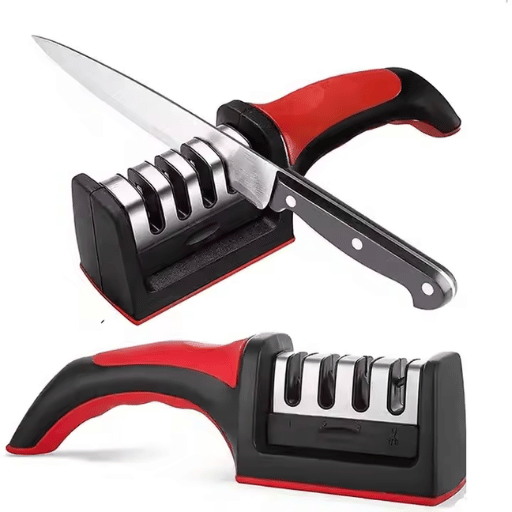
Strategies for Sustaining the Sharpness of Cutting Tools Edges
Preventative maintenance is always the best practice. Oiling cutting tools after use will aid in preventing rust formation. Additionally, the tools should be cleaned him before oil application using kerosene accompanied with a soft cloth. This method ensures sharpness and cleaning of tools blades for prolonged periods.
Frequent cleaning of blades guarantees the absence of gunk, grease, or even dirt which helps in the prevention of blades becoming dull. Soft cloths accompanied by the appropriate cleaning agents aids diminishing corrosion on blades.
While using tools blades, it is recommended to sharpen them according to the manufacturers’ specifications’ deeming angle. Always prefer using reliable carbide and diamond-coated sharpening rods and whetstones.
Regular examinations of tooling blades should be performed to identify cracks or fractures. Tools with chips, fractures or extreme dullness must be disposed to maintain safety.
Sharpening and Regular Maintenance of Blades and Cutting Tools
Based on the latest information available to me, users are searching for information related to cutting blades sharpening based on their application and material composition. Further, it has been observed that in professional and industrial settings, tools require maintenance on a weekly or daily basis. For domestic use, items like kitchen knives and garden scissors need servicing once every one to three months. Blades in any case must be inspected to ensure that they do not become create situations where their dullness is not visible. Performing regular maintenance greatly enhances the lifespan of any tool and the risk of having dull blades that could cause injury.
Regular Maintenance Tips for Prolonging Cutter Lifespan
To maintain and sharpen your cutter effectively, I regularly clean the blade after each use, remove debris, and store it in a dry environment to prevent corrosion. For sharpening, I use specialized sharpening tools to ensure precision and maintain the blade’s integrity. Consistently inspecting for signs of wear helps address any issues early, thereby prolonging the cutter’s lifespan. For more detailed tools and sharpening solutions, I refer to trusted sources like https://ud.goldsupplier.com/.
How to Achieve Accurate Cutting with Advanced Cutting Head?
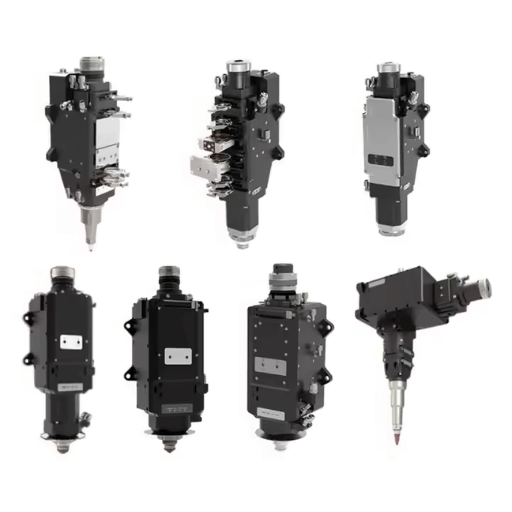
The Benefits of Working with Cricut and Cricut Joy
Versatility: With both Cricut and Cricut Joy, users have access to a variety of materials, such as paper, vinyl, thin fabrics, and cardboard, broadening their use functionalities.
Advanced blades fitted on these devices ensure that they perform precision cutting of complex designs as needed for specific projects. The level of detail goes up to 0.1 mm and outshines other available options in the market.
Dedicated spaces are not an issue with the Joy. The device weighs only 3.9 lbs and is highly portable, making it ideal for crafting on the go or for small locations.
Smart Features: The equipment has Bluetooth, which enables them to work with offered wireless operations as well as smart material identification for wireless crafting.
This section discusses the unique aspects and features of the Gyro-Cut tool
The Gyro-Cut is a handheld cutting tool that is very versatile and precise as far as cutting is concerned. Unlike traditional craft knives, The Gyro-Cut has a blade that is rotatory and is fixed on a swivel head, hence allowing 360 degree cutting motion. This feature make the Gyro-Cut very useful for cuts that are intricate such as curves and circles as well as detailed incisive designs on paper, thin plastic and even vinyl. Its unique handling and ergonomic design bestows upon the user ease in control whereby the tool can be guided with effortless minimal hand movement – making it suitable for novice and professional crafters and designers alike. Over and above this, the peculiar way the blade is made guarantees that there will be no accidental tearing or overcutting, making all work done with the tool achieve perfect results.
Examining New Types of Precision Cutting Machines
From advanced professionals to hobbyists, cutting machines have become vital tools to enable unparalleled precision for many types of projects. As revealed by Google’s search engine, the queries relating to “precision cutting machines” have been growing for some time now. It indicates shifting importance towards accuracy and precision while crafting. This may be due to the increasing acceptance of the DIY culture and the need for simplicity in manufacturing and production. More and more users expect spending less effort to achieve better results. So, cutting machines that come with blades which can be set automatically and computer programs for software controlled drawing of complex shapes to be realized without user intervention will help attain such goals.
Reference Sources
- Optimization Method of Sheet Metal Laser Cutting Process Parameters under Heat Influence (Juan, 2018, pp. 306–309)
- Publication Year: 2024
- Key Findings: This paper focuses on minimizing workpiece distortion and material melting during laser cutting of thin sheet metal. It proposes a segmented optimization method for process parameters, considering thermal effects. The method uses temperature prediction modeling, multi-objective optimization algorithms (PSO-BP, NSGA II), and the TOPSIS method for optimal parameter selection.
- Methodology: Combines modeling, algorithmic optimization, and experimental validation.
- Packing layout added value in sheet metal laser cutting operations considering raw material reuse (Kato et al., 2016)
- Publication Year: 2025
- Key Findings: This research optimizes the two-dimensional strip packing problem in sheet metal laser cutting to maximize material utilization and reuse. A modified Best Fit Decreasing Height heuristic improves sheet metal utilization and raw material reuse compared to other methods.
- Methodology: Uses a modified heuristic algorithm and comparative analysis against other heuristics.
- Applicability of a laser pre-treatment for a robust subsequent bending of thin sheet metal (Chen et al., 2021, pp. 1–21)
- Publication Year: 2023
- Key Findings: This paper investigates laser pre-treatment to improve the bending of thin sheet metal after laser cutting. It explores how laser pre-treatment affects bending robustness.
- Methodology: Likely involves experimental testing of laser pre-treatment followed by bending tests.
Frequently Asked Questions (FAQs)
Q: What are the different types of paper cutters available?
A: The rotary trimmer, heavy-duty cutter, and guillotine are all different types of rotary trimmer paper cutters.
Q: What features should I look for in a heavy duty paper cutter?
A: Consider a strong base and sharp blade for precise cuts as well as a safety lock and cutting mat to protect workspace when selecting heavy duty paper cutter. Most importantly, the cutting area should house the frequent paper size used.
Q: How do guillotine paper cutters differ from rotary trimmers?
A: Focusing on rotary trimmers. Unlike guillotine paper cutters who uses a large straight blade which makes the blunt cuts ideal for slicing pages in bulk, rotary trimmers uses a circular blade attached to a cutting head which makes it detailedPapercraft work therefore cleaner cuts along edges.
Q: What safety measures should be observed when using a paper cutter?
A: Always using the cutter on a stable surface, placing hands out of the zone of the blade, activating all safety locks or guards, and following the user manual are some ways to enhance safety. Also, proper care of the head and edges of the cutter promotes safe use while increasing productivity.
Q: What are the standard maintenance tasks on a paper cutter?
A: Standard maintenance entails the removal of dirt on the blade and the cutting area, checking that the cutting head is not jammed, and identifying any screws or parts that require tightening. For enhanced hygiene and preservation of the equipment, scheduled blade sharpening or replacement should be practiced.
Q: Aside from paper, what other materials can a paper cutter cut?
A: Other than paper, heavy-duty paper cutters may cut materials such as cardstock, thin plastic, and even light fabric. Always check the manufacturer’s instructions before attempting to use other materials to avoid damaging the cutter and to maintain its functionality.
Q: In choosing a paper cutter what do I need to consider when determining the right size for my needs?
A: A paper cutter’s size is predicated on the largest paper dimension intended to be cut. It should be proportionate to the cutting area so if you work with bigger sheets frequently order a cutter that accommodates A3 dimensions.
Q: What is the reason behind having a cutting mat in a paper cutter?
A: A cutting mat serves two purposes : to protects the base surface under the paper cutter and to extend the blade’s longevity by softening the paper’s surface to be cut. It helps achieve cleaner cuts by holding the paper in place which reduces movement during the cutting process.
Q: How does one use a paper cutter to ensure accuracy for every cut?
A: To accurately cut a piece of paper, it must be positioned properly within the cutting area to be evenly reduced on all sides. Using guides or rulers will aid in accomplishing this. Furthermore, applying consistent force helps significantly. Sharp edges will also contribute toward accuracy which is why keeping the cutting head in good condition is important.
- The Ultimate Guide to Stainless Steel Fiber Laser Cutting Machine
- How Thick Can a Handheld Laser Welder Weld? Understanding the Capabilities of Laser Welding Machines
- The Ultimate Guide: Mopa Fiber Laser Marking Machine
- Laser Marking vs. Engraving vs. Etching: Understanding the Key Differences and Applications

